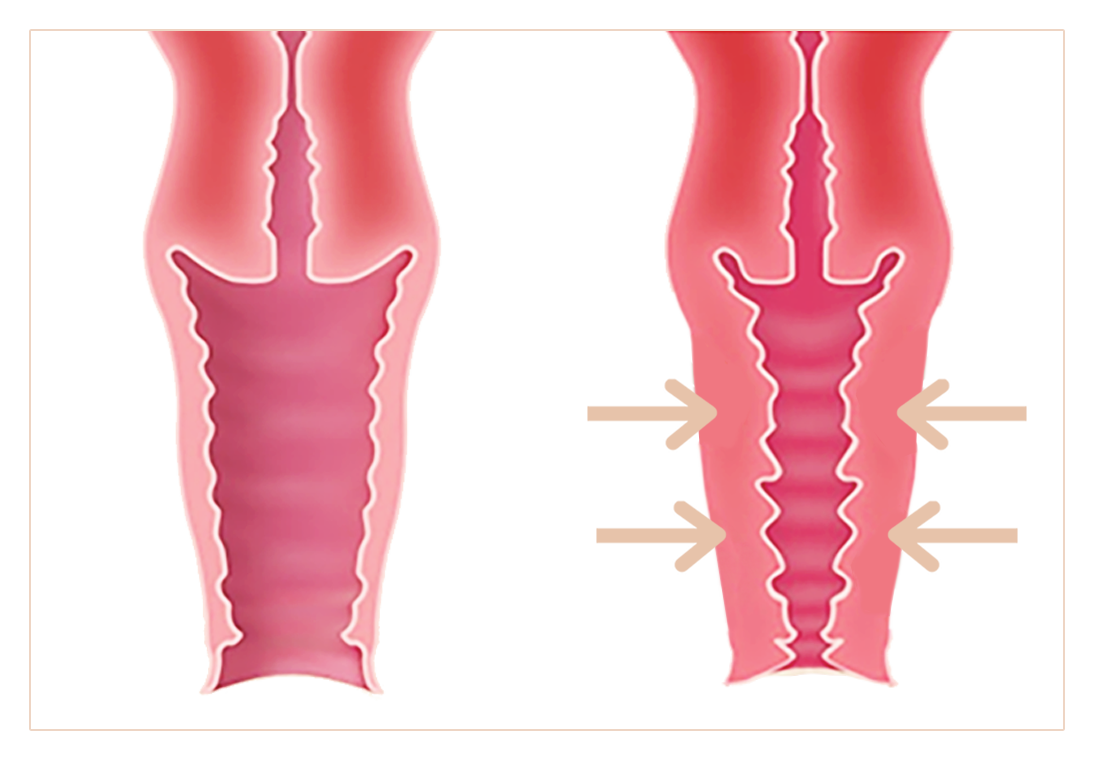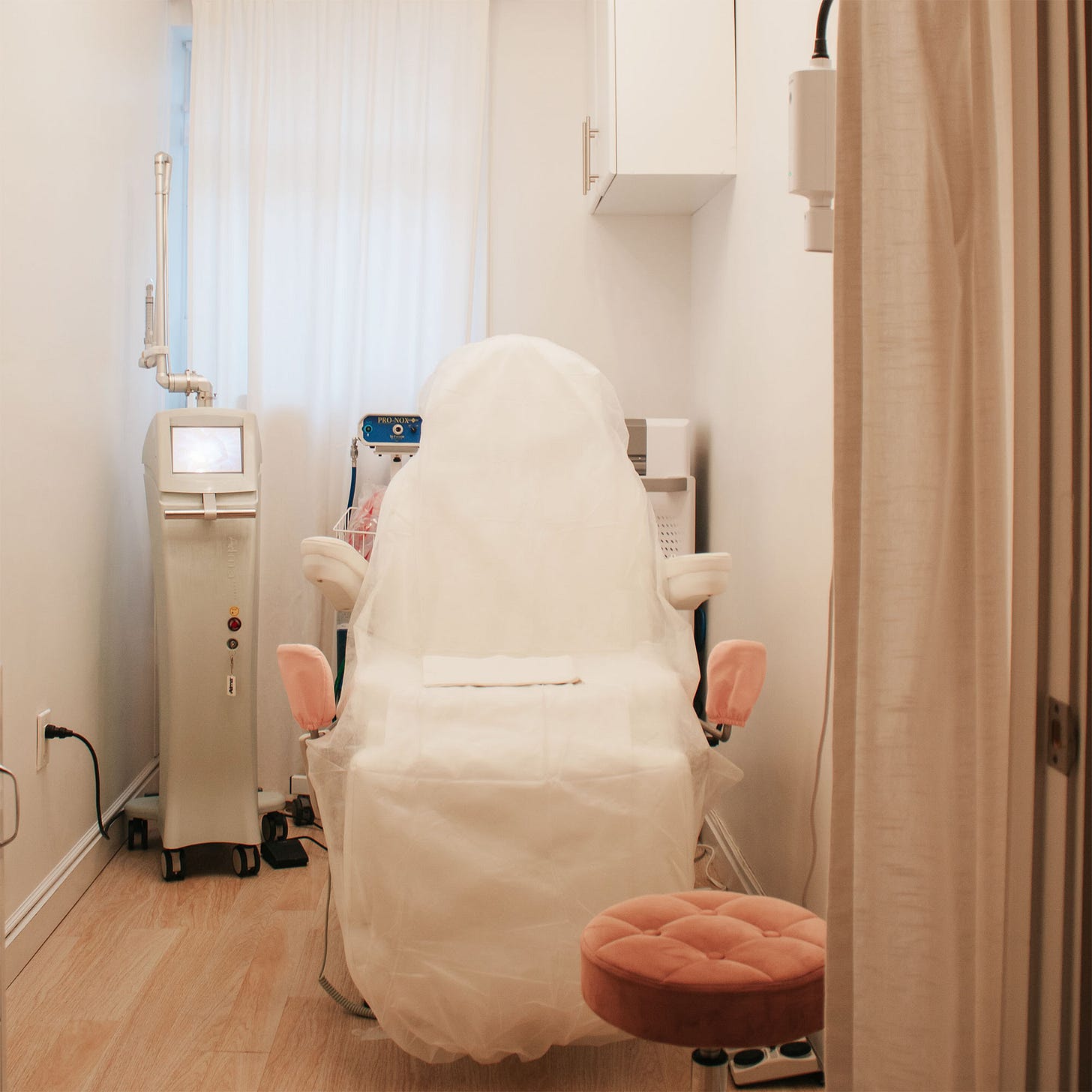The Facelift You’ll Never See Coming
Because beauty doesn’t stop at your jawline—and the conversation shouldn’t, either.
Vaginal rejuvenation isn’t exactly brunch-table conversation—even among your closest girlfriends. But at VSPOT, the female-founded, women-run clinic on Fifth Avenue, the hush-hush becomes matter-of-fact.
Founder Cindy Barshop and medical director Dr. Monica Grover have built a space where postpartum, peri-, and post-menopausal concerns get the same polish and attention as any part of your beauty routine.
What’s on the menu?
Think of it as a toolkit for life’s changing rhythms. Childbirth, hormones, menopause—even weight loss—can subtly shift how things feel (and look). VSPOT’s gentle yet effective offerings include:
FemiLift: A quick laser treatment—done in about the same time as your annual OB/GYN exam—that gently tightens tissue and can make intimacy more comfortable.
The O-Shot: Using your own plasma (yes, drawn from your arm), this injection restores volume and boosts blood flow to the clitoris and labia—potentially turning up arousal and sensitivity.
Is it pain-free? Not quite. More like a quick sting with the promise of fireworks down the road.
Why now?
Our bodies evolve, and thankfully, the conversation is evolving, too. Women are finally talking openly about dryness, laxity, and diminished sensation—not in hushed tones, but as quality-of-life matters. Clinics like VSPOT lead the charge, with all-female staff who know the territory firsthand (and aren’t afraid to dish candidly).
The bottom line:
If your mirror says “sag,” get some sleep and exercise—and if that doesn’t cut it, maybe call a surgeon. If it says “flat,” call in the filler. And if it says “ouch” or “meh” in the bedroom—why not explore options that put pleasure and comfort back on the table?
“Vaginal rejuvenation isn’t taboo—it’s self-care.”
3 Questions to Ask Before You Book
1) “Am I a good candidate—and what are my realistic outcomes?”
Ask how your concerns (dryness, laxity, sensitivity) match each treatment. Request before/afters from patients your age/skin type and a plain-English timeline of what you’ll notice at 1, 3, and 6 months.
2) “What’s the plan if I don’t love the result?”
Clarify touch-ups, timelines, and costs. For energy devices and PRP, improvements can be subtle; define what counts as success before you start.
3) “What are the risks, contraindications, and who performs the procedure?”
Confirm who’s holding the device/needle (MD, PA, NP), their training, and how they manage pain, infection risk, or rare complications.
Prep & Aftercare (Cheat Sheet)
Prep: Skip retinoids/harsh exfoliants 48–72 hours pre-treatment; avoid intercourse, hot yoga, and baths the day before and after unless cleared. Hydrate well.
Day-Of: Wear breathable cotton underwear; plan for mild spotting or swelling.
After: No intercourse, tampons, hot tubs, or intense workouts for the timeframe your clinician recommends (often 24–72 hours). Use only approved gentle cleansers/moisturizers.
Cost, Downtime & Expectations
Cost: Premium service; ask for total package pricing (initial + maintenance).
Downtime: Usually minimal—hours to a couple of days of sensitivity.
Results: Often gradual; many protocols recommend a series and maintenance.
Who It’s Best For
Postpartum or peri/post-menopausal changes, dryness/discomfort with intimacy, or mild laxity that doesn’t warrant surgery.
Those comfortable with incremental improvements over dramatic overnight change.
Who Should Pause or Pass (for now)
Active infections, pregnancy, recent pelvic procedures, or unmanaged health conditions—confirm specifics with your clinician.
Anyone expecting “one-and-done” or guaranteed orgasmic transformation.
Smart Script for Your Consult
“Here are my top symptoms and when they happen.”
“Show me outcomes from patients like me.”
“What’s the full cost, the maintenance plan, and the downtime?”
“If I’m underwhelmed at 12 weeks, what are my options?”





